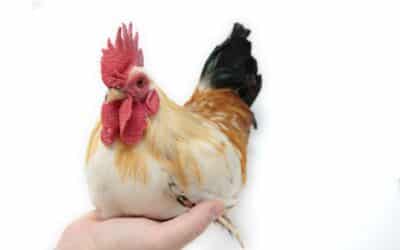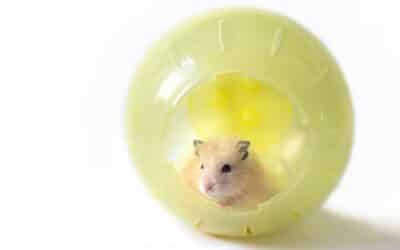If you’ve been part of the wacky world of the freshwater aquarium hobby for a while, you’ll probably know that there are many colorful shrimp species out there that do well in our fish tanks. Dwarf shrimp from the genus Neocaridina are popular, as is Caridina cf cantonensis, better known as the bee shrimp. But what about the road less traveled? Some of the most beautiful shrimp species available hail from the Indonesian island of Sulawesi. They’re not the easiest to keep, but for the dedicated shrimp enthusiast, they sure are worth it.
Keep reading for 5 of our favorite types of Sulawesi shrimp for the aquarium!
Sulawesi water values
The Sulawesi lake systems that these shrimp are adapted to, like Lake Poso and the Malili five-lake system, are characterized particularly by their high temperatures and pH values.
| Temperature | 77-87 °F |
| pH | 7.8-8.2 |
| dGH | 6-8 |
Cardinal shrimp (Caridina dennerli)
The most popular Sulawesi shrimp species (despite being discovered very recently, in 2007) is the cardinal shrimp, which grows to about 1” in length. This shrimp is characterized by its deep red color and bright white front legs. They almost look like they’re wearing little white gloves! Blackish to blueish varieties are also available.
A colony of cardinal shrimp will do well in an aquarium of 10 gallons or up. The water quality should always be kept high. After all, like other Sulawesi species, these guys are sensitive to stress as a result of bacteria growth and toxic ammonia and nitrite.
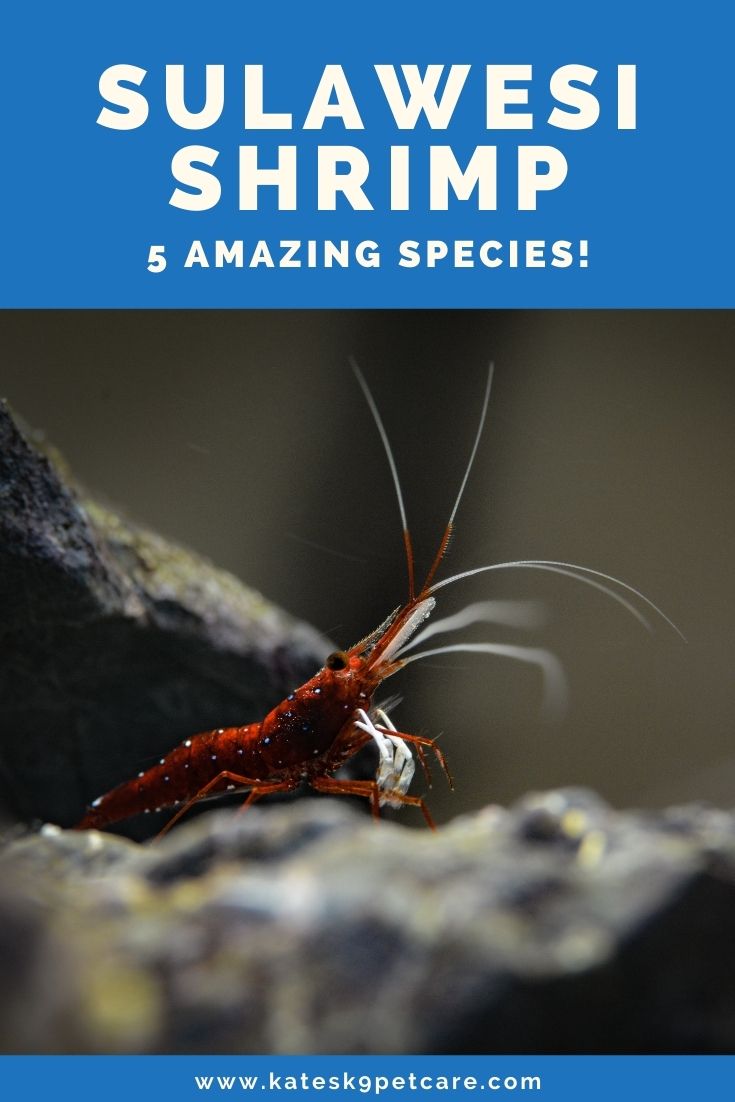
Matano tiger shrimp (Caridina holthuisi)
Also known as the six-banded Sulawesi shrimp or Matano tiger shrimp, Caridina holthuisi can vary when it comes to looks. Some specimens are an even dark brown, while others appear more transparent with sandy brown speckling throughout the body. What all of them have in common are the six beige vertical stripes they sport on their backs. They grow to a maximum size of around 1”.
Like other Sulawesi shrimp, Matano tiger shrimp are peaceful detrivores. They’re best kept with Sulawesi snails and small shrimp that can handle high temperatures and water values. Cherry shrimp (Neocaridina davidi var. ‘Red Cherry’) may be a good option, as they’re sturdy and not too fussy about water composition.
Blue leg Poso shrimp (Caridina caerulea)
Another of the most popular Sulawesi species, the blue leg Poso shrimp was named after the location it can naturally be found: Lake Poso. At around 1.2” these shrimp are slightly larger than their congeners, and they’re also usually significantly less colorful. Most specimens have transparent bodies, although we’ve seen a few that were blueish or solid green-blue. Some sources mention they tend to change color. Even the ones that are transparent are still pretty nice to look at, though, with blue on their tails, rostrum (face) and legs, as well as bright orange antennae.
The blue leg Poso shrimp is a great option if you don’t have Sulawesi shrimp experience yet. They’re more forgiving when it comes to water quality and also less shy. If you’d like to breed, though, be sure to replicate the water values associated with Lake Poso. Without perfect water composition, the fry unfortunately won’t make it to adulthood.
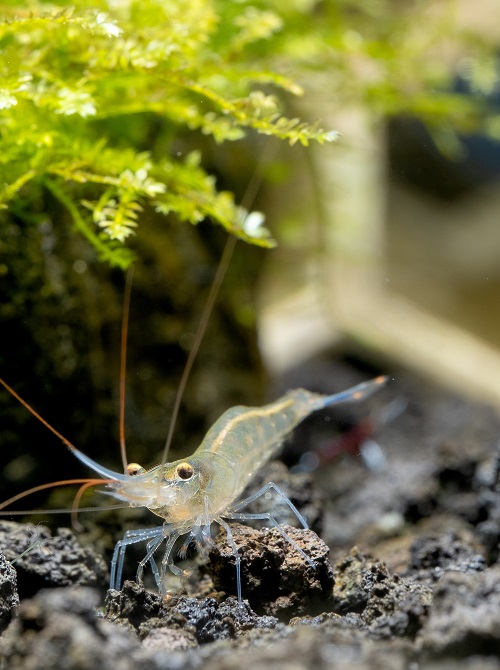
Yellow gold flake shrimp (Caridina spinata)
Another absolute gem! The yellow gold flake shrimp looks a little like the previously discussed Caridina dennerli, but it can be told apart from the lack of white “gloves”. Deep red in color and flecked with golden spots, it’s naturally found in the Sulawesi Lake Towuti.
Like Caridina striata, this species inhabits harder, rocky habitats. This means that although you can absolutely grow some live plants, they especially appreciate plenty of rocks and wood in their tanks.
Did you know? Sulawesi shrimp are threatened in their natural habitat. Of the 5 shrimp on this list, the IUCN lists 4: Caridina holthuisi (Matano tiger shrimp) is currently ‘Endangered’, while Caridina striata (red line shrimp), Caridina spinata (yellow gold flake shrimp) and Caridina woltereckae (harlequin Sulawesi shrimp) are ‘Critically Endangered’. Threats are listed as mining/quarrying (especially for nickel), hydroelectric power systems, pollution, and most harmfully: invasive carnivorous species like the flowerhorn cichlid.
The aquarium trade is also mentioned as a threat, so be sure to try to find tank-bred Sulawesi shrimp. They’re generally hardier as well, making it a win-win.
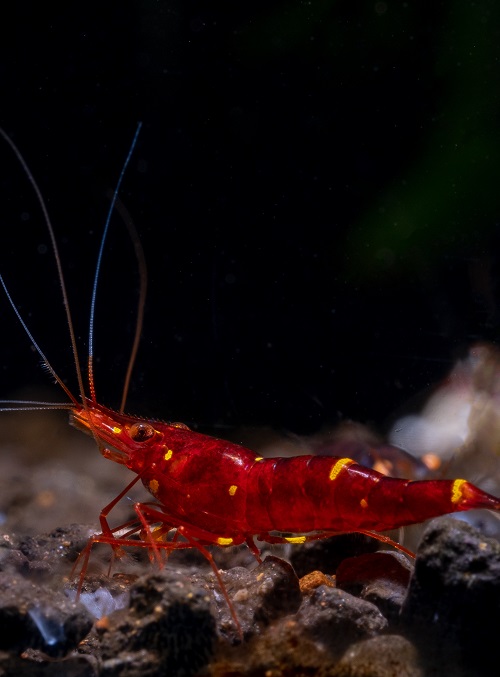
Red line shrimp (Caridina striata)
If you’ve got an affinity for saltwater aquarium shrimp species as well, Caridina striata (better known as the red line shrimp) may evoke a bit of déjà vu! It’s pretty similar in appearance to the marine peppermint shrimp, Lysmata wurdemanni. At 1” the freshwater version stays significantly smaller, though. It’s naturally found in the Sulawesi Malili system, particularly Lake Towuti.
Many Sulawesi shrimp naturally inhabit soft, litter-covered areas, but the red line shrimp and other Towuti species prefer hard substrates covered with biofilm to feed on. This isn’t the easiest species on this list, and you should have a good range of liquid water test kits ready to make sure water quality and composition are still ideal. Many aquarists prefer to use Reverse Osmosis water and remineralize it themselves to the perfect water values, as tap water often just doesn’t cut it.
Harlequin Sulawesi shrimp (Caridina woltereckae)
Good luck not confusing this one with the extremely similar but slightly smaller Caridina spongicola, which evokes fascination in the shrimp hobby for the symbiotic relationship it maintains with an as-of-yet undescribed freshwater sponge species. Its doppelgänger Caridina woltereckae is not associated with these sponges. In terms of appearance, it doesn’t matter which one you end up with: they’re both stunning.
Characterized by its white and deep red color pattern, the harlequin Sulawesi shrimp is naturally found in Lake Towuti. As always, the aquarium water should be warm and with a high pH. Some also recommend dim lighting for Sulawesi shrimp like this one.
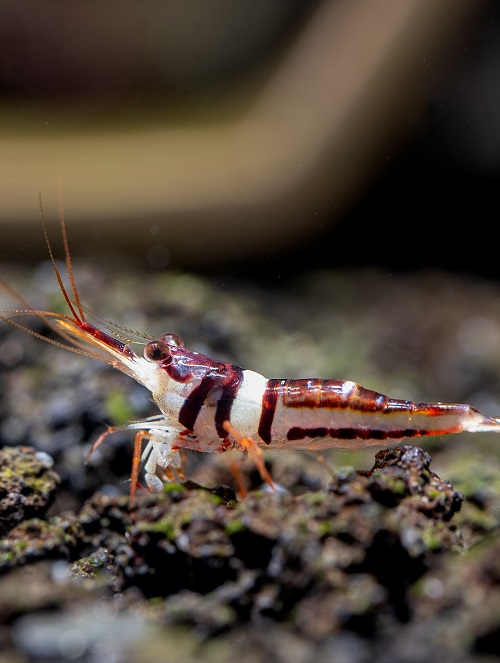
Bonus: Rabbit snail or Tylomelania (Sulawesi snail)
So should you keep your Sulawesi shrimp alone if they’re so fragile and make such an easy meal for predators? Not necessarily. As mentioned earlier, Neocaridina shrimp can be an option, but there’s an even better one: rabbit snails from the genus Tylomelania. These are actually endemic to the Sulawesi lakes as well, making them a very natural choice.
If you’d like to keep your shrimp with rabbit snails, be sure to only do so in tanks of 15 gallons or up. This prevents the snails’ waste output from affecting the water quality. The most popular Tylomelania variety is the yellow-bodied golden rabbit snail, although there’s also a chocolate-colored version.


